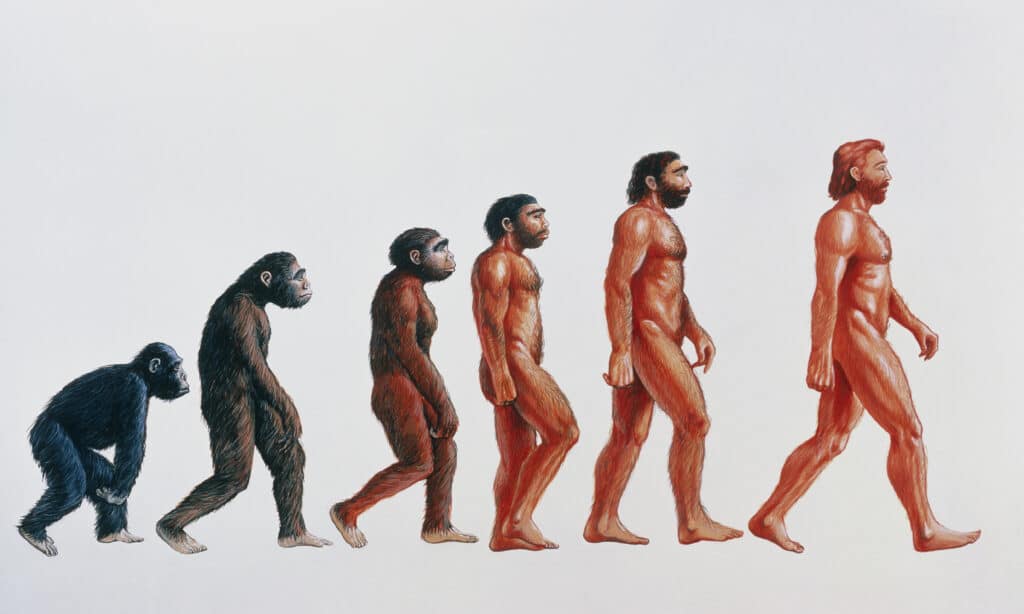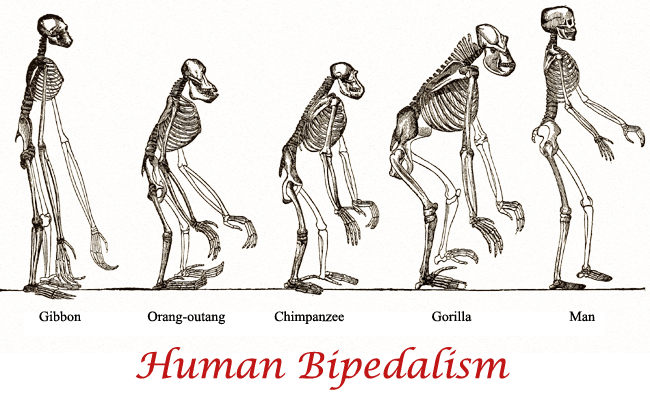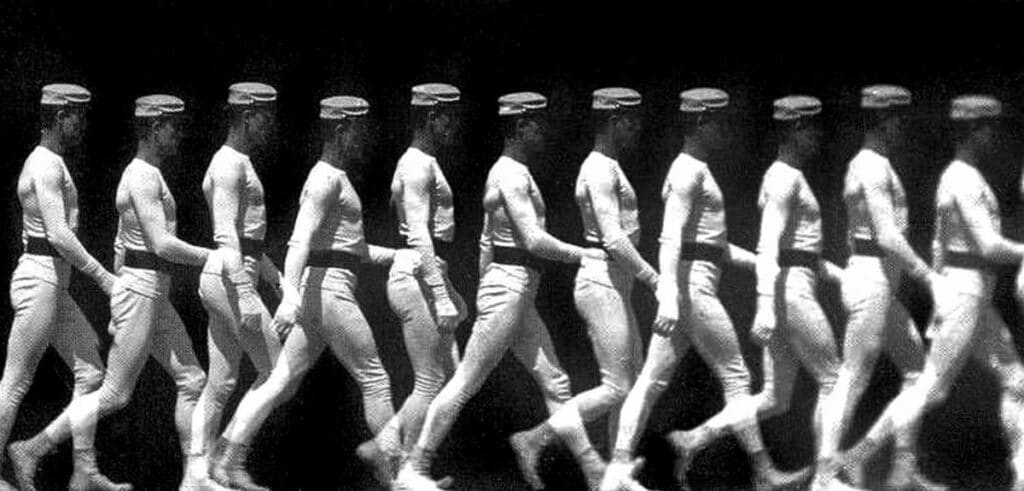Intriguingly, the history of walking is not as straightforward as it may seem. While it’s easy to assume that our ancestors have been walking since time immemorial, the story of how this mode of movement came to be is a fascinating journey through time, evolution, and the ingenuity of our species.
From the first bipedal strides of our hominid ancestors to the development of walking as a cultural and social activity, the origins of walking reveal an intricate tapestry of human history. In this article, we embark on a journey through the annals of time to uncover the intriguing history of walking.

We’ll explore the evolutionary forces that led to our unique ability to walk upright, investigate the role of walking in shaping human societies, and even delve into the philosophical aspects of walking as a simple yet profound act of human existence.
So, fasten your seatbelts, or should we say lace up your shoes, as we venture into the fascinating world of when walking was truly invented.
See Also: Real Ways to Increase your Penis Size: A Comprehensive Guide
Origins of Bipedalism
The origins of bipedalism, the ability to walk on two legs, are a subject of intense scientific investigation and debate. While the exact timeline and circumstances are not definitively known, several theories and pieces of evidence help us understand how and why bipedalism may have evolved. Here is an explanation of the origins of bipedalism:

- A Shift in the Environment:
- One prevailing theory suggests that changes in the environment drove the shift towards bipedalism. As forests began to recede and savannahs expanded in Africa, our early ancestors had to adapt to new habitats. Walking upright might have provided advantages in spotting predators or prey over tall grasses and in dissipating heat more effectively in an open environment.
- Freeing the Hands:
- Bipedalism might have evolved to free the hands of other tasks. As our ancestors started using tools, carrying food, or even cradling infants, having the ability to walk on two legs would have been advantageous. This hypothesis aligns with the development of a more complex social and technological lifestyle.
- Efficiency in Long-Distance Travel:
- Bipedalism can be more energy-efficient than quadrupedalism (walking on four legs) over long distances. Our ancestors might have benefited from this efficiency when it came to foraging for food or migrating between different food sources.
- Climate Change and Adaptation:
- Changes in the climate may have played a role. Some suggest that as forests thinned out and grasslands expanded, our ancestors adapted to these changing conditions by becoming bipedal. This allowed them to better navigate the changing landscape.
- Biomechanical Advantages:
- The skeletal structure of bipeds, particularly the position of the foramen magnum (the hole where the spinal cord attaches to the skull), suggests that bipedalism may offer advantages in terms of balance, vision, and energy efficiency compared to quadrupedalism.
- Early Hominin Fossils:
- The study of fossilised remains of early hominins (members of the human lineage) provides critical insights into the origins of bipedalism. Fossils like Ardipithecus ramidus and Australopithecus afarensis provide evidence of bipedalism in ancient hominins dating back several million years.
- Adaptive Radiation:
- Bipedalism might have been a pivotal adaptation that allowed early hominins to exploit new niches and food resources. This could have contributed to their success and diversification.
- Selective Pressures:
- The pressures of natural selection and competition with other species would have favoured individuals with the ability to walk upright if it conferred survival, reproduction, and resource acquisition advantages.
It’s important to note that these theories are not mutually exclusive, and multiple factors likely contributed to the evolution of bipedalism. Additionally, the exact timeline and sequence of events remain topics of ongoing research and exploration.
Theories Behind the Evolution of Bipedalism
The evolution of bipedalism in early hominins is a complex and multifaceted topic, and researchers have proposed several theories to explain why and how this unique form of locomotion developed.
While no single theory provides a complete explanation, these theories offer insights into the various factors that might have contributed to the evolution of bipedalism:
- The Savannah Hypothesis:
- Scientists like Raymond Dart and Charles Darwin proposed that this theory suggests the expansion of savannahs in Africa, is what led to the development of bipedalism. As forests receded and grasslands spread, our ancestors adapted to walking upright to better navigate this new environment.
- The Provisioning Hypothesis:
- This theory posits that bipedalism evolved to allow early hominins to carry food more efficiently. As our ancestors began to rely more on scavenging and gathering, having free hands for carrying food, tools, or infants could have been a significant advantage. Bipedalism freed up the upper limbs for these purposes.
- The Tool Use Hypothesis:
- Bipedalism might have evolved in conjunction with tool use. Carrying and manipulating tools more effectively while walking upright would have conferred a survival advantage. This theory suggests that tool use and bipedalism co-evolved, with each reinforcing the development of the other.
- The Thermoregulation Hypothesis:
- Some researchers propose that bipedalism allowed for more efficient thermoregulation. Walking on two legs reduces the surface area exposed to direct sunlight, helping early hominins manage heat stress in open, sunny environments like the savannah.
- The s3xual Selection Hypothesis:
- Bipedalism may have evolved as a result of s3xual selection. If walking upright made individuals more attractive mates, it could have led to the prevalence of this trait within the population. This hypothesis suggests that the advantages of bipedalism may not have been exclusively related to survival but also to mate selection and reproductive success.
- The Long-Distance Travel Hypothesis:
- Bipedalism might have been favoured for long-distance travel. In a landscape with dispersed food sources, the ability to cover greater distances efficiently could have been a valuable adaptation. Bipedalism may have allowed early hominins to access a wider range of resources.
- The Energetics Hypothesis:
- Bipedalism may have been more energy-efficient than quadrupedalism over long distances. Walking upright might have required less energy expenditure, making it a favourable adaptation for foraging, migration, and other energy-demanding activities.
It’s important to note that these theories are not mutually exclusive, and multiple factors likely played a role in the evolution of bipedalism. The exact sequence of events and the relative importance of each factor remain subjects of ongoing research and debate within the field of paleoanthropology.
Fun Fact: Top 30 Sissy Captions for 2023
The Advantages and Challenges of Walking on Two Legs
Walking on two legs, or bipedalism is a distinctive feature of humans and a few other primates. This form of locomotion offers several advantages but also presents certain challenges. Here are some of the key advantages and challenges of walking on two legs:

Advantages of Bipedalism
- Efficiency in Long-Distance Travel: Bipedalism is more energy-efficient than quadrupedalism (walking on four legs) over long distances. This efficiency is especially advantageous for early human ancestors who needed to cover substantial distances in search of food and resources.
- Freeing the Hands: One of the most significant advantages of bipedalism is the liberation of the upper limbs. This allows for tasks such as carrying objects, tools, weapons, and infants. It facilitated the development of complex tool use and contributed to our ability to manipulate the environment.
- Improved Line of Sight: Walking upright provides a higher vantage point, enhancing visibility over tall grasses and other obstacles. This increased field of view is advantageous for detecting predators or prey, making early humans more effective hunters and gatherers.
- Heat Dissipation: Walking on two legs exposes less of the body’s surface area to direct sunlight. This can aid in dissipating heat, which could have been beneficial in open, sunny environments like savannahs.
- Efficient Swimming: Bipedalism can be advantageous in swimming, as it aligns the body horizontally in the water, reducing drag. This may have aided early humans in crossing rivers or lakes.
Challenges of Bipedalism
- Balance and Stability: Bipedalism requires high balance and stability, as the body’s centre of gravity is higher than in quadrupeds. This can make walking more challenging, especially on uneven terrain.
- Vulnerability to Predators: Walking upright exposes the soft underbelly and vital organs, making early humans potentially more vulnerable to predators. However, the advantages of improved visibility and efficient locomotion likely outweighed this risk.
- Increased Risk of Injury: Bipedalism places more stress on the musculoskeletal system, particularly the lower back, knees, and feet. This increases the risk of certain injuries, such as lower back pain and joint problems.
- Slower Speed: In terms of pure speed, quadrupeds are generally faster runners than bipeds. Early humans may have compensated for this by relying on other hunting strategies, such as persistent hunting, where they chased prey over long distances until it was exhausted.
- Childbirth Challenges: The shift to bipedalism impacted the shape of the female pelvis, making childbirth more challenging. The narrowing of the birth canal is thought to be a trade-off for bipedal advantages. Human infants are born less developed than other primates, allowing a smaller head to pass through the birth canal.
In summary, bipedalism offered our ancestors numerous advantages, such as energy efficiency, freeing the hands for tool use, improved visibility, and more effective long-distance travel.
See Also: How Long Do Butterflies Live? Find Out Below
Walking in Ancient Civilizations
Walking has been a fundamental mode of transportation and a central aspect of daily life in ancient civilizations around the world. While the specific practices and significance of walking varied among cultures, it played a vital role in shaping societies, cultures, and even economies. Here’s a glimpse into walking in some ancient civilizations:
- Ancient Egypt:
- Walking was a common means of transportation in ancient Egypt, especially for those who could not afford more luxurious options like chariots or boats. The Nile River provided a natural route for travel, but walking was essential for navigating the desert and accessing resources.
- Walkways were constructed alongside irrigation canals, allowing people to move about efficiently. Tombs and temples often featured processional avenues, like the Sphinx-lined path leading to the Great Pyramid of Giza, which served religious and symbolic purposes.
- Ancient Rome:
- The Romans were known for their extensive network of roads, many of which were paved and designed for walking and cart traffic. Walking was the primary mode of transportation within cities like Rome itself.
- The concept of pedestrian zones in the form of colonnaded walkways, known as “porticoes,” became prevalent. These shaded areas offered protection from the sun and rain, and they often featured shops, making them lively social hubs.
- Ancient Greece:
- Walking was a central part of life in ancient Greece, with people frequently travelling on foot within their cities. The famous philosopher Aristotle was even known as the “Peripatetic philosopher,” referring to the practice of walking while discussing ideas.
- Stoa, covered walkways with columns, were a common architectural feature in ancient Greek cities. These served various functions, from providing shelter to hosting gatherings and philosophical discussions.
- Ancient China:
- Ancient China had a rich history of pedestrian culture, with walking playing a central role in daily life and cultural practices. Traditional Chinese gardens often feature intricate pathways designed for contemplative strolls.
- The concept of “Li,” which included proper etiquette and rituals related to walking, was highly important. It governed how individuals should walk in various contexts, such as during ceremonies or social events.
- Ancient India:
- Walking was a primary mode of travel in ancient India, particularly for pilgrimages to holy sites and temples. Pilgrims often embarked on long journeys on foot, believing it to be a spiritual practice.
- The ancient Indian practice of “parikrama” involved walking around sacred structures or geographical features, such as circumambulating Mount Kailash, considered the abode of Lord Shiva.
- Ancient Mesoamerica:
- In Mesoamerican civilizations like the Aztecs and Maya, walking was essential for both daily life and religious practices. These societies built extensive road networks for trade and communication.
- The Maya, in particular, constructed raised causeways known as “sacbeob,” connecting their cities and ceremonial centres. These pathways facilitated trade and religious processions.
Walking in ancient civilizations not only served as a practical means of getting from one place to another but also held cultural, religious, and philosophical significance. It played a pivotal role in the development and cohesion of these societies, leaving behind architectural remnants and historical records that highlight its importance.
Evolution of Walking Techniques
The evolution of walking techniques, also known as gait, is a fascinating journey through time, reflecting our species’ adaptation to various environments, lifestyles, and technological advancements. Here is an overview of the evolution of walking techniques in human history:
- Bipedalism in Early Hominins:
- The transition to upright walking on two legs, or bipedalism, is a defining feature of human evolution. It likely began over 6 million years ago with early hominins like Ardipithecus and Australopithecus. These hominins had a more ape-like gait, bent posture, and shorter stride.
- Homo Erectus and Longer Strides:
- As our ancestors evolved into Homo erectus around 1.9 million years ago, their walking techniques changed. They exhibited a more modern bipedal gait with longer strides and a fully upright posture. This development allowed them to cover more ground efficiently while hunting and foraging.
- Anatomically Modern Humans:
- Modern humans (Homo sapiens) have a highly efficient walking technique characterized by an upright posture, long strides, and an ability to maintain a steady pace for extended periods. This bipedalism is well-suited for long-distance travel, exploration, and carrying loads.
- Walking in Ancient Civilizations:
- In ancient civilizations, such as those in Mesopotamia, Egypt, Greece, and Rome, walking remained a primary mode of transportation. Roads, paths, and walkways were constructed for pedestrians. In some cases, walking was accompanied by the use of staff, canes, or walking sticks for support.
- Medieval and Renaissance Walking:
- During the medieval and Renaissance periods, walking techniques continued to be central to daily life. People of higher social status often had servants or attendants carry them in sedan chairs or carriages while commoners walked.
- Industrial Revolution and Urbanization:
- The Industrial Revolution and urbanization in the 18th and 19th centuries led to significant changes in walking techniques. People began walking longer distances to factories and workplaces, increasing urbanization and developing pedestrian-friendly infrastructure.
- Modern Walking Techniques:
- In the modern era, walking techniques have evolved with the introduction of comfortable footwear, including sneakers and walking shoes. Sports and leisure walking have become popular forms of exercise and recreation.
Throughout history, walking techniques have evolved in response to changing lifestyles, technologies, and societal demands. From early hominins adapting to a bipedal gait to modern humans walking for exercise and transportation, the way we walk has played a crucial role in our survival, culture, and physical well-being.
See Also: Family Nudist: A Thought-provoking Exploration of the Phenomenon
Walking in Modern Times
Walking remains a fundamental and ubiquitous activity in modern times, with numerous facets that encompass everything from practical transportation to recreation and exercise. Here is an overview of the role of walking in modern society:
- Transportation:
- Walking is still one of the most common and eco-friendly modes of transportation for short distances. People walk to work, school, local stores, and public transportation hubs. Walking is often a crucial component of the daily commute in urban areas.
- Health and Exercise:
- Walking is a popular form of exercise that is accessible to people of all ages and fitness levels. It is known for its numerous health benefits, including cardiovascular health, weight management, and stress reduction. Many individuals engage in daily or regular walks to maintain physical fitness.
- Pedestrian Infrastructure:
- Modern cities are increasingly investing in pedestrian-friendly infrastructure. Sidewalks, crosswalks, pedestrian bridges, and pedestrian zones are designed to ensure the safety and convenience of walkers. The “Complete Streets” movement advocates for streets that accommodate all users, including pedestrians.
- Walking Tours and Tourism:
- Walking tours have gained popularity in tourism. Guided tours on foot offer tourists an immersive experience, allowing them to explore historical, cultural, and natural landmarks up close. Walking tours can be found worldwide in cities, national parks, and heritage sites.
- Commuting and Urban Planning:
- Urban planning initiatives often promote walking as part of sustainable transportation solutions. Walkable cities prioritize mixed-use development, accessible public transportation, and amenities within walking distance to reduce the need for cars.
- Pedestrian Safety and Advocacy:
- Pedestrian safety is a concern in many urban areas. Advocacy groups and campaigns promote road safety for walkers, including education on pedestrian rights, safety measures, and efforts to reduce traffic accidents involving pedestrians.
- Technological Innovations:
- Technology has influenced modern walking in various ways. GPS navigation and mapping apps assist walkers in finding routes and tracking distances. Wearable fitness trackers and smartphone apps encourage individuals to monitor and improve their daily step counts.
- Competitive Walking:
- Competitive walking sports, such as racewalking, remain popular, with athletes striving for speed and endurance while adhering to specific rules and techniques. Racewalking is a recognized Olympic sport.
In modern times, walking retains its importance as a practical means of transportation, a form of exercise, a cultural and social activity, and a key component of sustainable urban planning. As cities continue to evolve, the emphasis on pedestrian-friendly infrastructure and promoting walking as a healthy and eco-conscious choice will likely persist.
- Competitive walking sports, such as racewalking, remain popular, with athletes striving for speed and endurance while adhering to specific rules and techniques. Racewalking is a recognized Olympic sport.
Read Also: Dinar Guru: What Does it Mean?
Conclusion
walking is a timeless and essential aspect of human existence that has evolved and adapted throughout history to suit the needs and demands of our ever-changing society. In ancient civilizations, walking was a primary mode of travel and a symbol of human progress, as evidenced by the construction of roads, pathways, and processional avenues.
Today, walking remains a common and eco-friendly means of commuting within cities while also serving as a valuable tool for exploring the world around us through guided tours and tourism.
The health benefits of walking, including improved cardiovascular health, stress reduction, and weight management, have made it a popular form of exercise accessible to people of all ages and fitness levels.
This emphasis on health and well-being, coupled with the promotion of pedestrian-friendly urban planning, has led to the development of safer and more accessible walking infrastructure in many cities.
Moreover, walking continues to foster social connections and community engagement. Group walks, charity events, and walking clubs provide opportunities for people to connect, enjoy the outdoors, and give back to their communities.
Walking represents a mode of transportation and a way of life—a timeless and universal practice that connects us to our past, promotes our well-being, and shapes our future.
FAQs for When was Walking Invented
Is walking invented in 1938?
Was it invented in 1938? Walking was invented by the first land animal 375 million years ago. it was called Tiktaalik. The fossilized survives from old animals have uncovered how ancient life pulled itself from the water and made its first flimsy strides along the way that prompted four-legged land creatures.
When was walking invented in Africa?
So, as you can see, human walking took a very long time to develop. It appeared in Africa more than 4.4 million years ago, long before tool-making appeared.
Which country invented walking?
No One Invented Walking · The First Vertebrates to Walk on Land Evolved From Fish · Reptiles Were the First to Walk on Two Legs.
Who was the first person to discover walking?
Recent research suggests that Homo erectus, the early humans who adopted an upright walking posture, had a longer lifespan than previously estimated.





